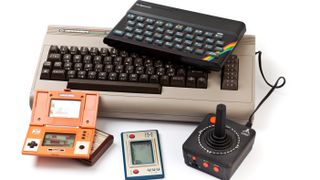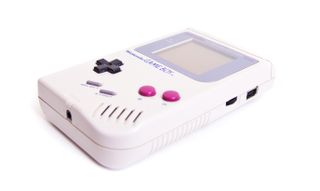Raspberry Pi ten years on: Breathing new life into retro machines
A full decade after the Raspberry Pi first hit shelves, the microcomputer is reviving older PCs and games consoles

On 29 February 2012, a new, tiny British-designed computer costing just £22 went on general sale, promising to help children learn how to code. Within minutes, the first batch of Raspberry Pi devices had sold out and the brains behind it realised they had a major hit on their hands. Even so, few would perhaps have predicted how much of a success it would be. Having sold 100,000 units on the first day, it surpassed eight million sales just four years later. At that point, it’d beaten the Amstrad PCW as the best-selling British computer. Today, more than 40 million boards have been sold.
Far from being a flash in the pan, the Raspberry Pi is on to its fourth main model. There are two smaller versions – Zero and Pico – and a unit called the Raspberry Pi 400 that harks back to the days when computers were placed in the same case as the keyboard. In some respects, that’s brought the Raspberry Pi full circle. A lot of the motivation for creating the low-cost machine lay in the legendary BBC Micro, the computer responsible for introducing an entire generation of British schoolchildren to the delights of Basic programming. What the Raspberry Pi has also done, though, is revitalise some of those old machines. Although most retro enthusiasts concentrate on getting the most out of the original computers, some are hell-bent on taking things further.

The Raspberry Pi Pico is one of the latest models of the ten year-old microcomputer
Raspberry Pi: Top projects to try yourself
The Raspberry Pi has enabled people to emulate old machines but also expand on their capabilities. “I’d never consider throwing away a retro computer, but before the Raspberry Pi option came about, I can see how people would think about doing just that,” says tech enthusiast Stephen Williams. A year or so ago, Stephen bought a broken Commodore 64 that couldn’t be fixed using spare parts. He decided instead to tear the machine apart. His actions weren’t born from frustration or a desire for destruction, but to resurrect the machine using a Pi board. He isn’t alone in such an endeavour, with the affordable computer long having become intrinsically linked with the flourishing retro scene.
In Stephen’s case, the Commodore 64’s motherboard was replaced by a Raspberry Pi computer, with Lego used to keep the device, wires and ports in the right place. He then connected an Arduino Micro to the Raspberry Pi, which allowed the original C64 keyboard to be used. “I’ve repaired or future-proofed a lot of old computers but it’s great to know that, if a board is really done-for, you could feasibly rig up a Raspberry Pi inside the casing,” he says. “It keeps the nostalgic look and feel of the original machine but it also lets you do modern things such as run a decent media player or play YouTube videos. It was inevitable Raspberry Pi would move into the retro space.”
Using emulators
Pivotal to this movement was the development of emulators such as PiMAME (now PiPlay), one of the first to be released for Raspberry Pi in January 2013. Since then, lots of software packages have emerged including RetroPie, Lakka and RetroArch. By allowing the tiny machine to behave like other computer systems, enthusiasts have been able to mimic almost any classic machine they wish, from the ZX Spectrum and Commodore 64 to consoles such as the SNES and Mega Drive.
Stephen used RetroPie for his Commodore 64 build, which ensured it looked and behaved just like the original. “The emulators are fantastic,” he says. “The loading times are quick and they are so convenient.” Using Raspberry Pi also means modern monitors and game controllers can be plugged into the HDMI and USB ports. “You can even have network access,” he adds.
Get the ITPro. daily newsletter
Receive our latest news, industry updates, featured resources and more. Sign up today to receive our FREE report on AI cyber crime & security - newly updated for 2024.
The prevalence of emulators means Raspberry Pi forms the basis of many homemade retro video game consoles – one of the easiest and most popular projects since it only really involves installing a bunch of emulators, getting hold of gaming ROMs and connecting a gamepad.
Some people have also created large Pi-powered arcade cabinets while others, including Michael Pick, have gone the other way, in his case devising the “World’s Smallest Gaming PC” that’s tinier than a can of Coca-Cola. He followed that with the “World’s Smallest iMac” using a Raspberry Pi 4 inside a 3D-printed case containing a 7in screen, while an image called iRaspbian provided the look of macOS. The possibilities, it seems, are only limited to people’s imagination.

The Raspberry Pi can be used to emulate machines from a bygone era
“One of the best things about using Raspberry Pi is that it’s open source and there’s a lot of information available online,” says retro maker Gautier Serodon. “Many communities have set up around Raspberry Pi as well so it’s easy to ask questions and find any answer. It’s very, very cool.”
Gautier tapped into such knowledge when he was giving a Minitel terminal a makeover. Unlike Stephen, who aimed to evoke memories of the Commodore 64 by making his version almost indistinguishable from the original in both how it looked and operated, Gautier wanted to combine the old with the new. “I wanted to turn an old, unnecessary item into something useful,” he continues.
For those unaware, Minitel was a French online network that launched in 1982. Effectively France’s precursor to the world wide web, it offered banking, email, train booking, telephone directory and adult chatroom services, but the plug was pulled in 2012, rendering the terminals useless.
Having bought a Minitel 1B, a terminal made in 1982 by Telic Alcatel, Gautier got to work. He stripped the terminal of its insides, inserted a 10.4in LCD panel into the case and introduced a Raspberry Pi 4 computer. He also used an Arduino Pro Micro to retrofit and emulate the clicky AZERTY keyboard and now he uses the device to take notes during his engineering classes.
Levelling up

Streamlining DevOps in hybrid, multi-cloud, on-premises, and edge environments
Simplifying the user experience and delivering As-a-Service benefits
Such an approach is common, but using Raspberry Pi boards to breathe new life into an existing computer is only part of the story. An even bigger achievement is to mod a retro machine that can remain compatible with original peripherals.
Jeroen Domburg, for instance, created a working Nintendo Game Boy using a Raspberry Pi Zero W and a custom 4-layer PCB in place of the handheld console’s motherboard. Yet it was still capable of running games from original Game Boy cartridges. It could also play non-Game Boy titles via Pi-based emulators run from custom-made carts.
What made this build even more impressive was that you would never know this was a mod by looking at the device. The Game Boy appeared as if it hadn’t even been touched, not least because the project used the original LCD screen, buttons, case and link port.

The iconic Nintendo Game Boy was first released in 1989
It’s a great example of how Raspberry Pi can enhance a retro machine. “Most of us grew up in a world where we either had or longed for particular consoles and computers and a lot of us wanted them to do more,” Jeroen says. “Now we’re all grown up, we finally have the means to turn those youth dreams into reality and some of us decide to indulge in that.”
What Raspberry Pi does, he says, is allow people to slip on an enhanced pair of rose-tinted specs. “Nostalgia tends to work as a filter,” he says. “We remember how impressed we were with the graphics and sound of these machines from the 1980s and 1990s but we forget the long loading times, bad disks, noisy RF modulators and so on – possibly because we didn’t know better at the time.
“Back then, they were things you would just live with but now we have much faster technology, those limitations become limiting. Retro mods get rid of those limitations. They make the hardware fit our memories more. All of the best retrofits tend to work best when they still make the machines work as intended but better.”
He points to RaSCSI as proof: a virtual SCSI device emulator that can mount virtual CD-ROMs and hard drives on vintage Macs. He also namechecks PiStorm, which is an adapter powered by Raspberry Pi that provides a low-cost accelerator for a Commodore Amiga. All users need to do is remove the Motorola 6800 processor from an Amiga 500, 500Plus or 2000, replace it with the PiStorm add-on and connect it to a Raspberry Pi containing a Kickstart ROM on the microSD card.
Advances such as these make life easier but that doesn’t mean we should shun the clunkier aspects of past tech. Although Jeroen would prefer to consign floppy disks to the past, some people still love them. Indeed, Scott Baker created a floppy disk controller for his Raspberry Pi 4. It allows him to read from and write to 5.25in floppy disks.
“Most people who are eager to re-experience some of the products they used in their youth prefer to use period-accurate equipment,” he says. “But there are two issues that make that difficult. First, actual vintage equipment can be very expensive and in some cases difficult to find. Second, vintage equipment often suffers from component failure.
“Electrolytic capacitors, for example, are notoriously for failing. Backup batteries sometimes leak and destroy circuit boards. Even ICs sometimes fail and replacement components may not always be available. Raspberry Pi is cheap and capable and it also offers other capabilities such as built-in Ethernet. It can help to bridge the gap between new and old.”
Scratching an itch
But could Raspberry Pi actually replace an entire retro machine from scratch? I suspect you already know the answer. Stephen’s Commodore 64 still used original components (the case and keyboard) but Billy Nesteroulis’ recreated Amiga 600 was produced from all-new parts. He emulated the 16-bit Commodore computer on a Raspberry Pi 4 and fitted it inside a full-size, 3D-printed replica case fitted with a specially designed Cherry MX keyboard.
By using the Ambibian 1.5 Extended Edition distro, which includes Raspbian Buster V10 OS, this build also expanded the Amiga 600’s capabilities. It can make use of a modern browser, the VLC media player and Qmmp audio player as well as LibreOffice Writer. At the same time, it’s powerful enough to run games and the iconic pixel-art software Deluxe Paint.
Billy’s project produces an Amiga 600 that works well in the modern day, providing an alternative route to scouring eBay for used models that may still require some work to get them going. In that sense, Raspberry Pi can continue the legacy of machines that would otherwise become lost to time. If it wasn’t for the Raspberry Pi, for instance, very few of us would get to tinker with a SOL-20 – an obscure machine that appeared on the cover of Popular Electronics magazine in July 1976.
According to maker Michael Gardi, just 12,000 of these were ever made but he decided to create a full-sized replica based around a Raspberry Pi 4 running an 8080 emulator. Looking just like the images in the magazine, it supports a virtual tape drive and video output. “It had more in common with the Altair 8800s and IMSAI 8080s of the day than it did with the Apple and Commodore computers that would soon follow,” Gardi says.
In his view, taking old machines and recreating them using a Pi is educational. “I’m interested in shining a light on some of these historically significant machines that were the stepping stone to the personal computing world we live in today,” he explains.
He points to the SOL-20’s importance to Apple’s legacy, for example, explaining that Steve Jobs and Steve Wozniak had arrived at the first annual Personal Computer Festival with their Apple I in a cigar box believing their computer to be better than the competition.
“There was just one thing nagging at Jobs: the SOL-20,” says Gardi. “Jobs was confident his product had the best circuitry but the SOL-20 was better looking. It’s a funny coincidence that the Apple II also looked more like a professional machine with a built-in keyboard and power supply.”
Gardi loves replicated old computers and he once used a Raspberry Pi in a scaled-down replica of a DEC VT100. Detailing such creations at mikesmakes.ca, it’s proof of the Pi’s worth to the retro community.
“Raspberry Pis are well suited to making retro productions because of their low cost and high performance,” Michael says. “They also have numerous GPIO pin for external hardware, many available HATs and Python built into Raspberry Pi OS.
“Creating the reproductions has tremendous educational value and I believe the devices of old and their designers deserve to be remembered and honoured. I’m sure the purists out there would disagree, but retro computers that make use of Raspberry Pis are just as interesting and nostalgic as the original machines, especially if obtaining an original is next to impossible.”




